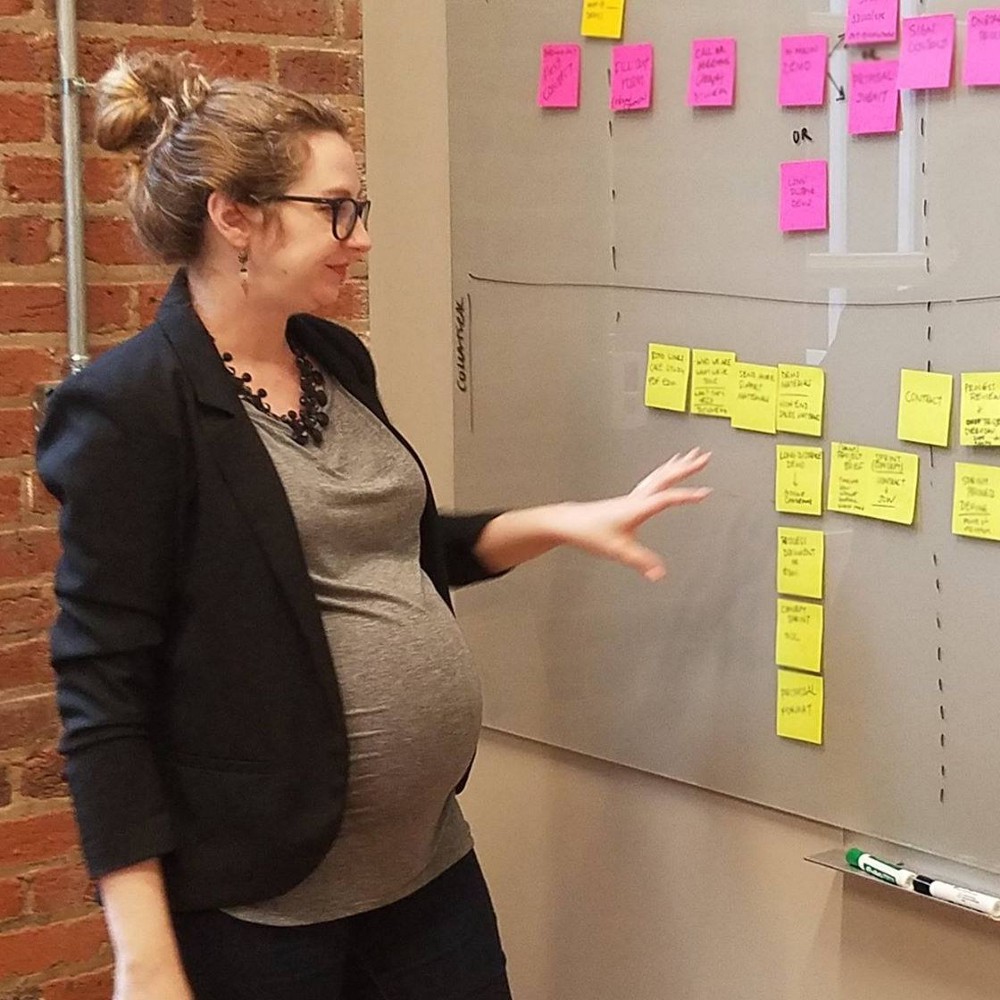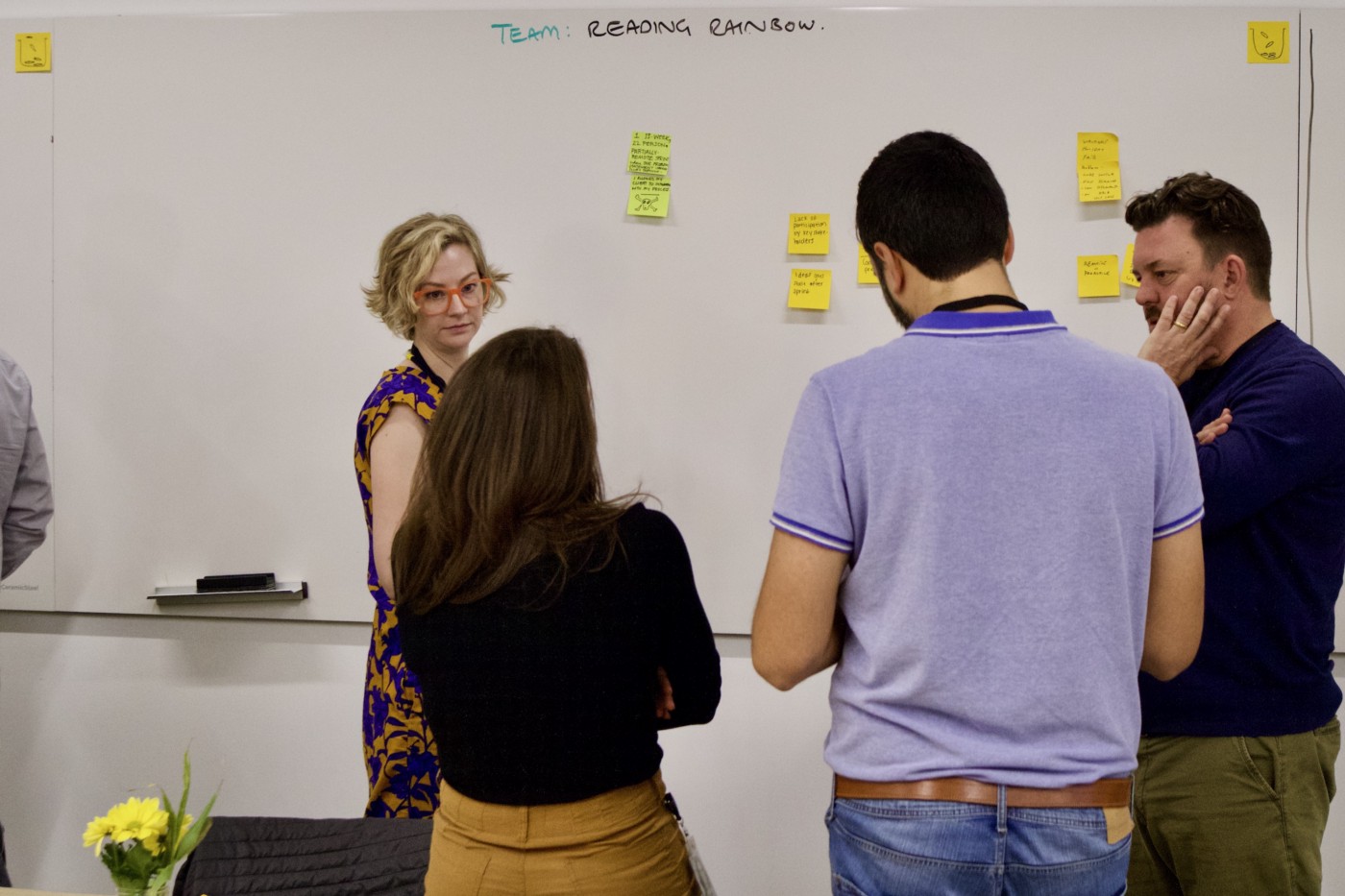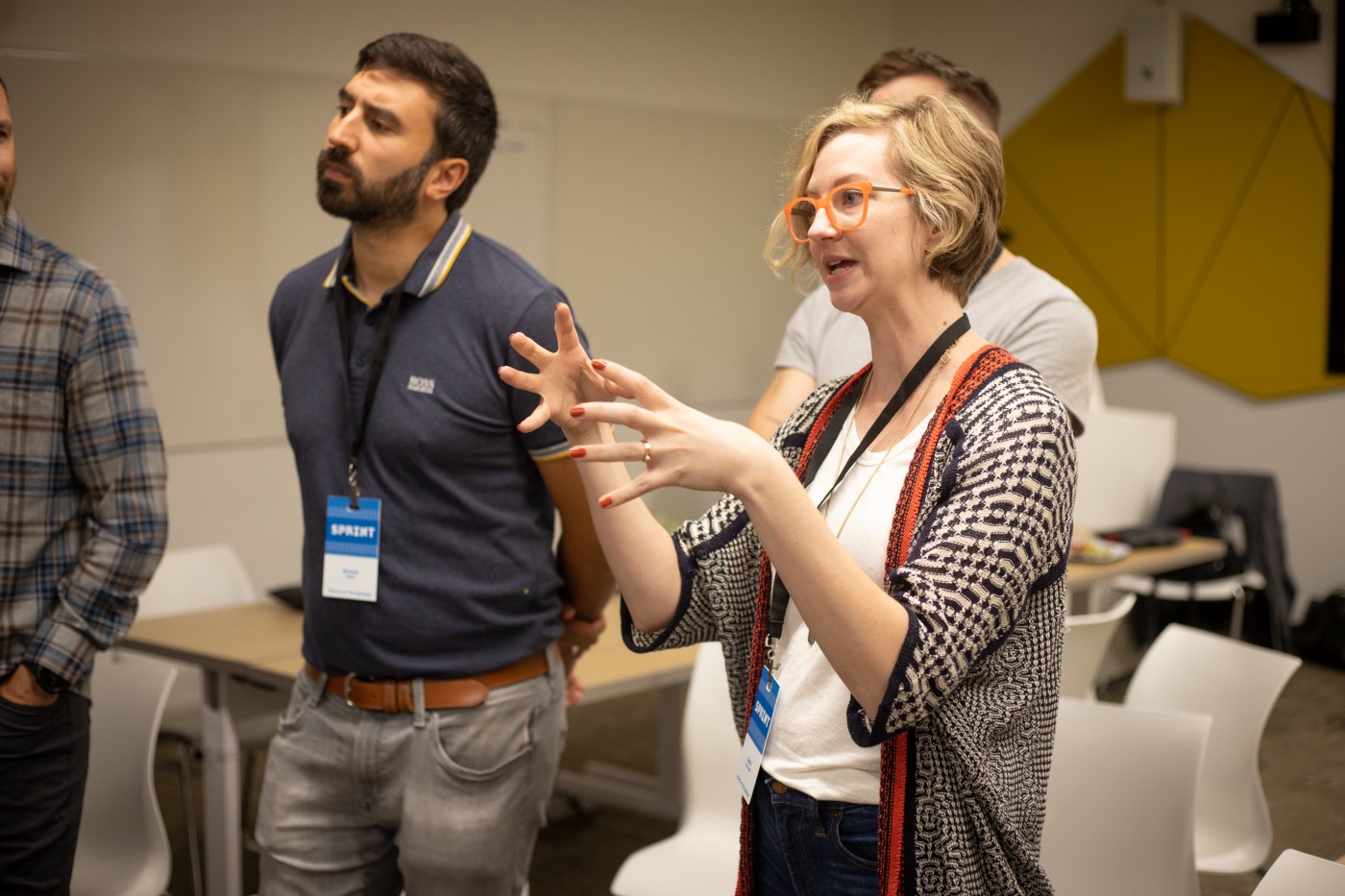After nearly a decade as a design thinking consultant, I’ve learned two main lessons. One: everything can be improved by a little empathetic research, and two: services are really, really hard to sell.

The book “This is Service Design Thinking” fell into my lap 10 years ago and completely changed the trajectory of my career. I was a marketing freelancer who consulted with startups and investors to bring clarity to their communications (to each other and to the customers). I was a writer who understood storytelling and marketing, and I was filling a huge need.
I started prototyping pitches and testing them with target customers — and it was a client who told me I was using design thinking. He gave me that book and sent me on my way to redesign how I worked with clients forever.
But first, let’s make sure we are using the same language:
A quick recap for you, in case you don’t live and breathe this stuff every day.
Design Thinking (aka Human Centered Design): solving problems by understanding how humans experience them (empathy); often paired with low-risk experimentation.
Service Design: a quest to create a high quality service by focusing on the customer’s experience and how that integrates into the process and system of delivering the service.
Experience Design: focusing on the quality and outcome of the customer’s interaction with a product, service, process, event or environment (or an experience! Ha!)
Content Design: (aka UX Writing, sometimes) the consideration of the language, message, copy and communication as an experience to deliver the right information in the best way.
Sales Design: creating beautiful retail experiences. Not what we’re here for, just to clarify.

Sales Experience Design is the integration of all of the above terms (except that last one!). It’s the merging of design thinking and service design, experience design and content design to deliver a holistic, effective, meaningful and best-in-class experience while you’re selling to your customers. Simply put: it’s designing how you sell to your customers, and how they understand what you offer.
Simply put: it’s designing how you sell to your customers, and how they understand what you offer.
From the lead generating content to the sales call and sometimes all the way through new customer onboarding, the sales experience is an area where it’s normal to default to established traditions and processes, without considering how those processes are experienced. It works as it is, even if it’s been done since the Mad Men agency days.

We accept that this is the way proposals are sent; this is the way sales calls are handled…but have you ever asked ‘why?’ Why is it done this way? And is there a better way?
10 years in design thinking (and a lifetime of rebelling against the status quo, to be sure) tells me that there has to be.
How to Design a Sales Experience:
The Content Design Component
Like any human-centered experience design process, we begin with UX research (aka customer research): open-ended interviews meant to establish empathy and understanding. This adds more depth to customer personas and also helps create a common language — which becomes incredibly important in the content design phase.
Speak to 3 customers and you’ll observe a coincidence; speak to 8 and you’ll define a trend.
Speak to 3 customers and you’ll observe a coincidence; speak to 8 and you’ll define a trend. Often in these interviews, a phrase will be repeated — a way of describing the problem, or the process to finding a solution; even the summary of expectation.
This will help form service descriptions but may also inform the design of those services. Frequently we’ve worked with clients who offer a broad menu of services and through this research uncover a specific suite of services — helping them streamline and claim a very niche space in their industry. And, like they say: the riches are in the niches, baby (the way a mentor of mine said this in the US, it totally rhymed. Just roll with it). Getting specific and clear makes selling so much easier (with customers who are easier to qualify, and much more targeted).
We were working on a client who exclusively sold design sprints, and all of their website language was focused on that. However, clients weren’t searching for “design sprints” as a solution, and so the website wasn’t pulling in leads. Research revealed what they were actually searching for — and we used this to craft a new website on which the design sprint was described as a completely different service. It was still the same service and solution, but here’s the thing: clients aren’t searching for the solution. They’re searching for their problem.
When you’re experiencing something weird, do you head directly to the Mayo Clinic website and type in the diagnosis? Nope. You type your symptoms and hope it’s not cancer (spoiler alert: Mayo Clinic always says it’s cancer).
When you’re experiencing something weird, do you head directly to the Mayo Clinic website and type in the diagnosis? Nope. You type your symptoms and hope it’s not cancer (spoiler alert: Mayo Clinic always says it’s cancer).
Most likely, your customers are searching for the problem they’re having and not the solution they expect. Exceptions are trendy solutions, new buzzwords and other hot topics that they may want to learn more about.
So when we launched the new language that downplayed the design sprint and focused on the problem, inbound leads increased (especially with the addition of a lead generating content piece speaking directly to the pain points) and everyone lived happily ever after.
By understanding the problem space and solution beliefs, and learning how your customer understands these areas, you’ll have all of the information you need to design a sales experience for them, how to describe the services, and even how to market them.
Prototype this language and test it — either through user testing the website, A-B testing sales calls or a grander experiment to find out what areas need more clarity (and which are totally landing with the customers).
Once the language is clear, the research can also guide the overall experience design. When we begin working with new clients, often they will say we don’t need to re-map their customer journey or service roadmap. They’ve already done it. Yet most of these maps begin at the same place: “Customer begins receiving service.”

The Service Design Part:
The sales process should have consideration as part of your service design, because it’s a remarkable opportunity to forge long term buy-in and strengthen a customer relationship. How does your customer experience your sales team? How do they experience sales of your competitors? What are the touchpoints of the entire process and where are the opportunities to deliver better?
We map out the entire customer journey, usually becoming obnoxiously specific in an effort to spot opportunities for greater clarity, personalization and even (so exciting!) industry disruption. It’s also important to examine how leads come in, how they are handled and how customers experience that process.
You can also use onboarding as a training opportunity, so look for ways to set expectations and onboard customers to new tools in low-stakes situations.
You can also use onboarding as a training opportunity, so look for ways to set expectations and onboard customers to new tools in low-stakes situations. That way, they’re ready to jump in with your team when it’s time to use that tool or process.
When all of our clients moved their services to virtual in spring of 2020, tools like Mural, Miro and even Zoom had a bit of a learning curve. Introducing these tools to customers in unexpected ways early on gave them time to build confidence in using them before the real service began. It also gave our clients a huge advantage by learning which pain points customers experienced in learning the new tools, and helped our clients improve their training experience overall.
Let’s put a dollar value on it.
When you view your sales process as part of the overall experience and service you deliver, you can identify opportunities to bring your customers a better experience. Challenging convention when it comes to typical processes like billing, proposal delivery, and even the sales call itself can have a huge impact with your customers, how they perceive your company and even how long your relationship will last. It’s an investment in differentiation and has long term benefits for your company.
We’ve seen an increase in length of engagement, as well as intangible benefits like greater trust or buy-in for new ideas as a result of a closer client relationship. A McKinsey study showed that companies experience a 20% reduction in costs of service when using tools like journey mapping, and customer centric companies outperform their competitors by 85%. A better experience saves money, provides competitive advantage and builds client trust — which translates roughly into ‘yeah, it’s worth it.’





